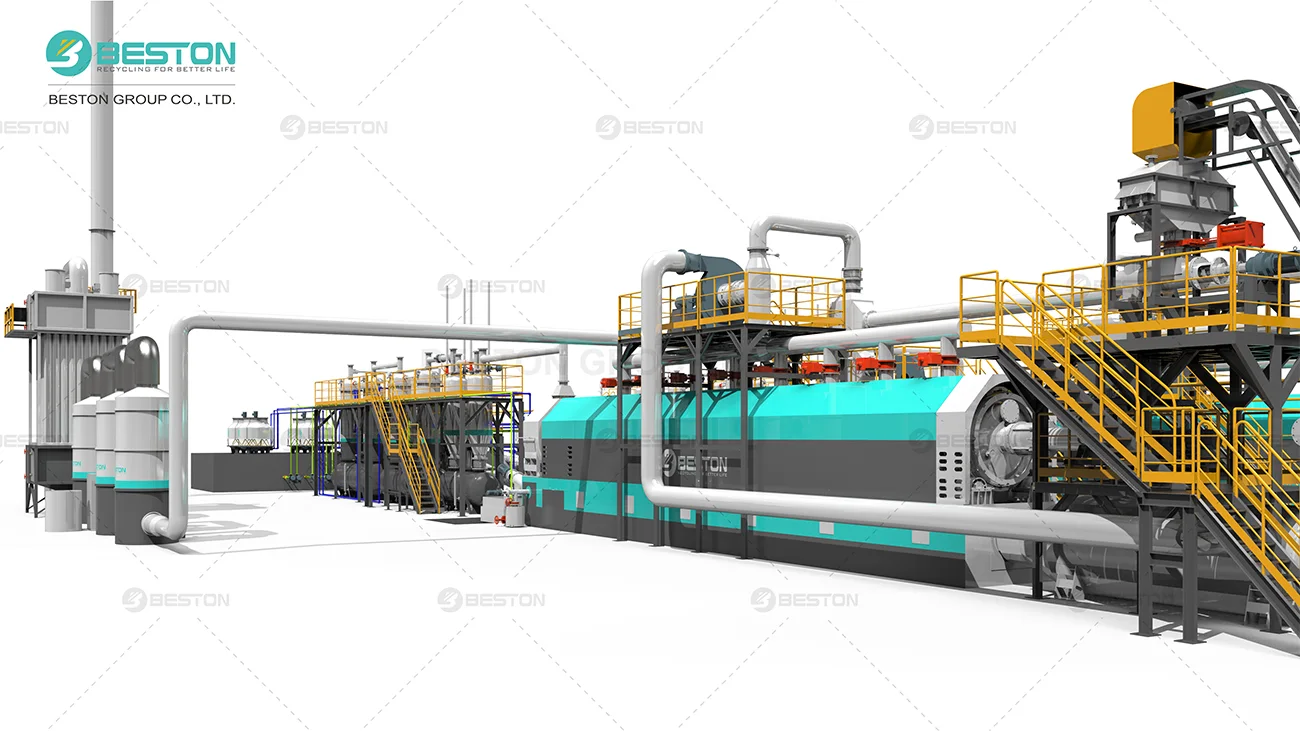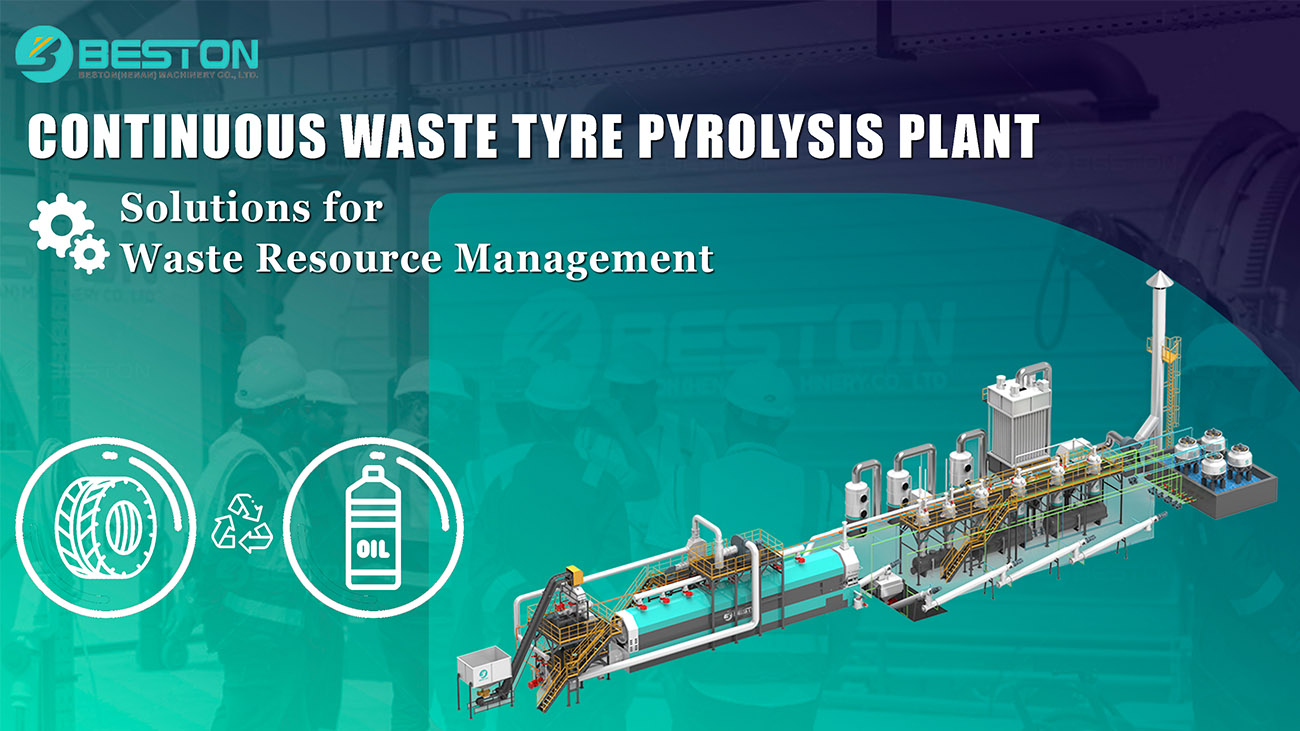The continuous tyre pyrolysis plant offers a sophisticated and efficient solution for recycling waste tyres. This process involves the thermal decomposition of tyres in the absence of oxygen, producing valuable products such as tyre pyrolysis oil, carbon black, and combustible gas. The continuous nature of the plant ensures that the feedstock is processed without interruptions, increasing throughput and operational efficiency. Understanding the operating principles of such a plant is essential for optimizing performance and maximizing output.

1. Feedstock Preparation
The first stage in the operation of a continuous tyre pyrolysis plant is the preparation of tyres for pyrolysis. Waste tyres are usually shredded or chopped to a uniform size before being fed into the reactor. This ensures a consistent feed and facilitates even heat distribution during the pyrolysis process. Proper pre-treatment is crucial to minimize operational interruptions and enhance the efficiency of the plant.
In addition to size reduction, tyres must be free from contaminants such as metals or non-organic materials. Magnetic separators are often employed to remove metal components from the tyres, ensuring that only rubber material enters the reactor. This stage is important for ensuring the purity of the pyrolysis products and prolonging the lifespan of the machinery.
2. Pyrolysis Reaction Chamber
Once prepared, the feedstock enters the pyrolysis reactor, where the actual pyrolysis process takes place. In a continuous pyrolysis plant, the feedstock is continuously loaded into the reactor and heated under controlled conditions. The reactor is typically heated to temperatures between 350°C to 600°C, where the tyres begin to decompose thermally.
The process occurs in the absence of oxygen to prevent combustion. Instead, the heat causes the organic components of the tyres to break down into simpler hydrocarbons, resulting in the formation of tyre pyrolysis oil, carbon black, and combustible gases. The reactor is designed to ensure uniform heat distribution, facilitating efficient pyrolysis and maximizing the yield of valuable products.
3. Continuous Feed and Product Collection
One of the main advantages of a continuous tyre pyrolysis plant is its ability to process a constant feed of material. As the tyres are continuously fed into the reactor, the products of the pyrolysis process are simultaneously discharged. This uninterrupted operation enhances the efficiency of the plant and ensures high output with minimal downtime.
The pyrolysis oil produced during the reaction is vaporized and passed through a condensation system. This system cools the vapors, causing them to condense into liquid form, which is then collected in storage tanks. The oil can be refined or used as an industrial fuel, providing an important revenue stream.
In addition to pyrolysis oil, the process generates carbon black, a solid byproduct that can be used in various industries, including the production of rubber, plastics, and batteries. The carbon black is separated from the reactor, cooled, and collected for further processing or sale.

4. Gas Recovery and Utilization
A significant amount of combustible gas is produced during the pyrolysis process. This gas is typically a mixture of methane, hydrogen, and carbon monoxide. In a well-designed continuous tyre pyrolysis plant, these gases are recovered and utilized as a fuel source to power the reactor or other equipment in the plant.
The gas is cleaned and purified before being used for energy production. This process reduces the plant’s overall energy consumption, making the operation more cost-effective and environmentally sustainable. Some plants also use the gas for electricity generation, further improving the plant’s energy efficiency and economic viability. You can consult the Beston Group for more information on tire pyrolysis.
5. Product Separation and Refining
The continuous pyrolysis plant is equipped with advanced separation and refining systems to ensure the high-quality output of the pyrolysis products. After the pyrolysis reaction is complete, the products are separated based on their physical properties. The pyrolysis oil is condensed and collected in liquid form, while the carbon black is separated as a solid.
The combustible gases are purified and stored for use as fuel, either for internal use or external sale. Some plants also have advanced filtration systems that enable the separation of high-value chemicals or other byproducts. These additional steps help to maximize the economic value of the plant’s output, turning waste tyres into multiple valuable products.
6. Emission Control and Environmental Considerations
Despite the many advantages, tyre pyrolysis plants must also address environmental concerns. The pyrolysis process generates gases and particulate matter that must be properly treated to prevent air pollution. Modern continuous tyre pyrolysis plants are equipped with advanced gas cleaning systems, such as scrubbers and filters, to remove harmful pollutants from the exhaust gases before they are released into the atmosphere.
In addition to gas treatment, the plant’s design often includes systems for the safe disposal of any residual waste products, ensuring that the entire operation is environmentally responsible. The closed-loop nature of the continuous process, where emissions are captured and reused or treated, is a key factor in making the tyre pyrolysis process more sustainable.
7. Automation and Monitoring
Continuous tyre pyrolysis plants are often equipped with advanced automation systems that monitor and control the entire process. These systems ensure that temperature, pressure, and feed rates are maintained within optimal ranges, improving efficiency and product quality. The automation systems also provide real-time data on plant performance, allowing operators to detect potential issues before they become problems.
With remote monitoring and automated control, plant operators can ensure a smoother and more reliable operation, minimizing downtime and maximizing profitability. The integration of automation and digital technology helps streamline the process and enhances the overall productivity of the plant.
Conclusion
The continuous tyre pyrolysis plant is a highly efficient and scalable solution for recycling waste tyres into valuable products such as tyre pyrolysis oil, carbon black, and combustible gases. By continuously feeding material into the reactor and utilizing advanced technology for product separation, gas recovery, and emissions control, these plants provide a sustainable and profitable business opportunity. Their operational efficiency, coupled with environmental benefits, makes them a critical asset in the global drive towards waste recycling and resource recovery.